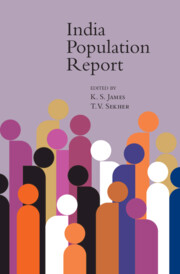8 - Data-Quality Indicators from the National Family Health Survey
A Few Observations
Published online by Cambridge University Press: 15 August 2023
Summary
Introduction
The National Family Health Survey (NFHS) was initiated under the stewardship of the Ministry of Health and Family Welfare (MoHFW), Government of India, in the year 1992 when its first round was conducted. Four more rounds since then have been conducted. All rounds of the NFHS have persistently made a sincere effort to provide valuable nationally representative maternal and child-health indicators. The sample size and structure of the questionnaire, along with the pertinent health-related questions, have increased with the passing time. In NFHS-1 (1992–93), 88,562 households were surveyed in 24 states and the National Capital Territory of Delhi. A total of 89,777 ever-married women aged 13–49 years were interviewed to obtain the maternal and child-health indicators. In NFHS-2 (1998–99), the sample size of ever-married women increased to 91,000 aged 15–54 years from 26 states. A few additional health indicators, such as the nutritional status of women and children by running blood tests, were introduced in this round. In NFHS-3 (2005–06), the sample size for ever-married women was increased to 131,596 aged 15–49 years from 29 states of India. For the first time, information on men aged 15–54 years was collected in this round. Human immunodeficiency virus (HIV) and anaemia testing among women and children was also initiated.
After NFHS-3, the MoHFW wanted to integrate the different existing health surveys into one full-fledged survey providing district-level estimates. The NFHS had been designed as per the standard Demographic and Health Surveys (DHS), which have global coverage, whereas some of the previous district-level surveys like the Annual Health Survey (AHS) and the District-Level Household Survey (DLHS) had been planned to cover limited demographic and health issues and were subsequently subsumed to avoid duplication of efforts. In lieu of this, the periodicity of the NFHS was fixed at three years, and the NFHS was proposed to be turned into a government-funded survey (Shrinivasan, 2012). NFHS-4 (2015–16) was partially funded, and the most recent round, NFHS-5 (2019–21), is completely funded by the MoHFW. NFHS-4 was evidently different from its successors in two ways: (a) it provided an array of maternal- and child-health estimates at the district level, and (b) there was more than a five-fold increase in its sample size (Table 8.1). In addition to the 29 states that were surveyed in NFHS-3, six union territories were also included in the NFHS-4 sample.
- Type
- Chapter
- Information
- India Population Report , pp. 270 - 310Publisher: Cambridge University PressPrint publication year: 2024



